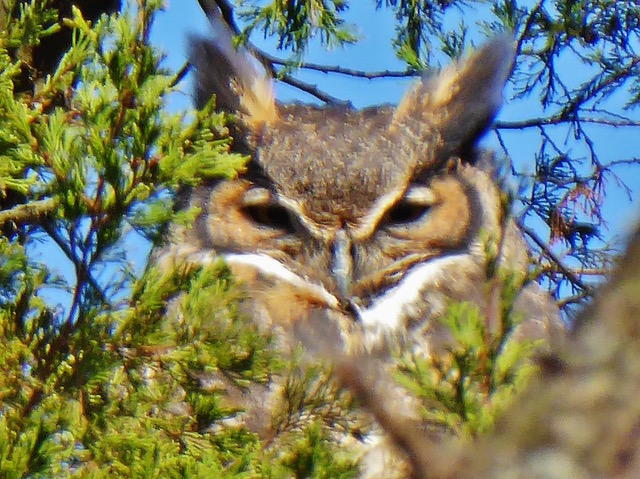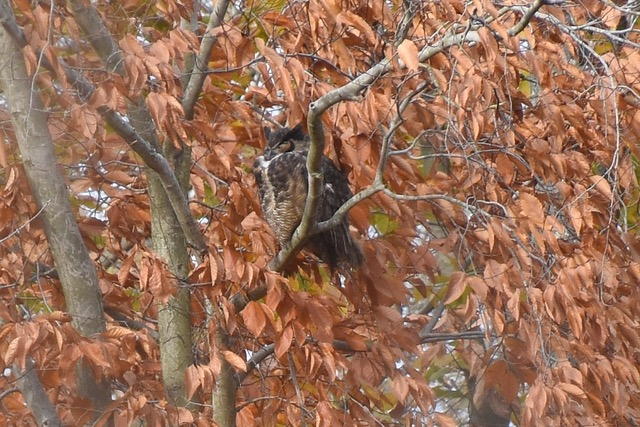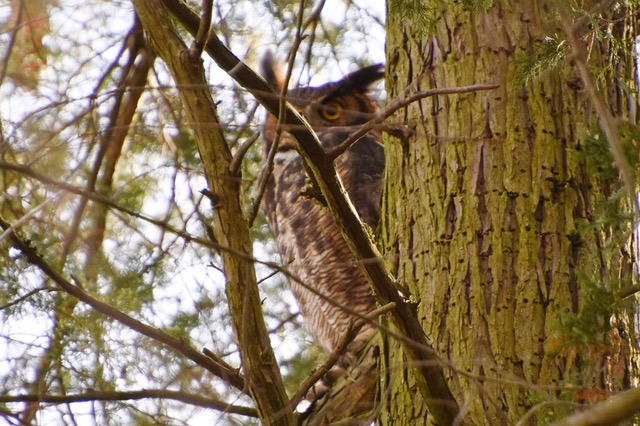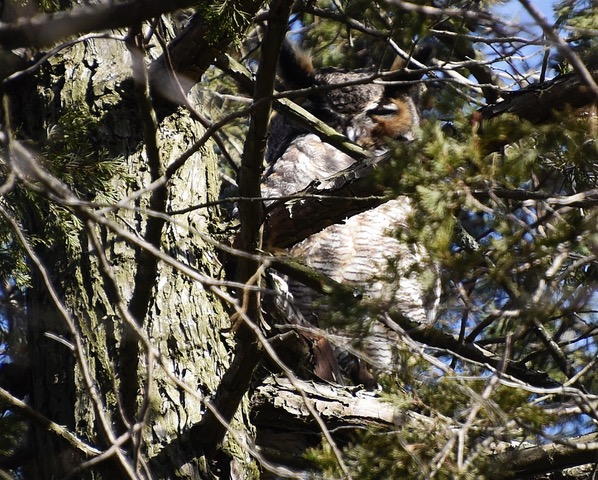The Bird of Wisdom

WHOOOO gave you permission to take my picture?”
The owl as a symbol of sage knowledge can be traced back to classical Greece and the Virgin Goddess of Wisdom Athena and later her Roman counterpart Minerva. There are 19 species of owls known in North America, and they range in body size from about six inches (the aptly named Elf and Pygmy Owls) up to 2 feet (Great Gray Owl) with wing spreads of one foot to three and one-half feet. In our area of Burlington County the Great Horned Owl is widespread, and the most likely to be seen and/or heard. Other owls that inhabit our area are Barn Owl, Barred Owl, Eastern Screech Owl, Short-eared Owl, Long-eared Owl and Saw-whet Owl. During winter months, in what is called an irruption, Snowy Owls will come into New Jersey and can be seen mostly along the coast.
The majority of owls seek their prey at night but there are also diurnal (day and night) crepuscular (dawn and dusk) hunters. With their very large eyes they have great light gathering capacity in low light situations. Interestingly they don’t move their eyes to follow prey but rather rotate their heads up to 270 degrees. They also have excellent hearing that is augmented by a characteristic called a facial disc. The ends of their wing feathers are serrated and that is believed to muffle sound making them silent in flight. When seen in flight they have a characteristic “flat face” in profile view that easily distinguishes them from other raptors like hawks.
Avian Life series text and photographs by Robert Koch



